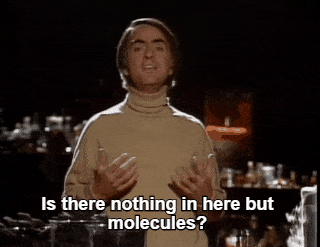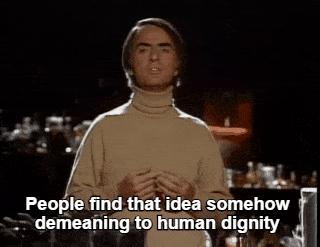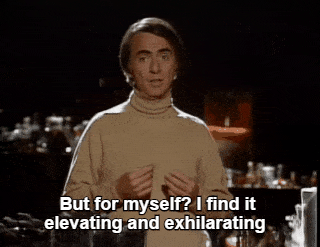The Solar Eclipse Of December 22, 1870. Observed From Syracuse, Sicily, By Captain G. I. Tupman, R.M.A.

The solar eclipse of December 22, 1870. Observed from Syracuse, Sicily, by Captain G. I. Tupman, R.M.A.
More Posts from The-grey-areas-blog and Others



The essence of life is not the atoms and small molecules that go into us, it’s the way, the ordering, that those molecules are put together.
- Carl Sagan
Thanks so much for your questions. Do not forget the Syrian people. Or all the others that are oppressed. Stay engaged. Your voices matter. Your actions matter. Raise awareness. Raise funds. Raise your knowledge level. Beware of false prophets. Do what you can, when you can, with whatever you can. Stay woke. Be true. -Adnan Zulfiqar


http://www.sciencemadesimple.co.uk/news-blogs/wendy-awarded-an-mbe
Science getting recognised, and I’m so happy. The second link is Wendy Sadler who is being awarded an MBE. She’s the founding director of science made simple, a Welsh program to help get kids involved and excited by science after they realised our education system tended to have the opposite effect. According to her colleagues, she’s not only an amazing scientist but incredibly dedicated to inspiring a new generation to follow their curiosities.
Why are people so surprised north korea was able to build a weapon of that range. That's literally their main point of funding. Maybe if the USA and Europe stopped underestimating other countries out of their own supremacist values, we wouldn't be in this position
Living and Working Aboard Station
Join us on Facebook Live for a conversation with astronaut Kate Rubins and the director of the National Institutes for Health on Tuesday, October 18 at 11:15 a.m. ET.
Astronaut Kate Rubins has conducted out of this world research aboard Earth’s only orbiting laboratory. During her time aboard the International Space Station, she became the first person to sequence DNA in space. On Tuesday, she’ll be live on Facebook with National Institute of Health director Francis Collins, who led the effort to map the human genome. You can submit questions for Kate using the hashtag #SpaceChat on Twitter, or during the live event. Here’s a primer on the science this PhD astronaut has been conducting to help inspire your questions:

Kate has a background in genomics (a branch of molecular genetics that deals with the study of genomes,specifically the identification and sequencing of their constituent genes and the application of this knowledge in medicine, pharmacy,agriculture, and other fields). When she began her tenure on the station, zero base pairs of DNA had been sequenced in space. Within just a few weeks, she and the Biomolecule Sequencer team had sequenced their one billionth base of DNA aboard the orbital platform.
“I [have a] genomics background, [so] I get really excited about that kind of stuff,” Rubins said in a downlink shortly after reaching the one billion base pairs sequenced goal.
Learn more about this achievement:
+First DNA Sequencing in Space a Game Changer
+Science in Short: One Billion Base Pairs Sequenced
Why is DNA Sequencing in Space a Big Deal?
A space-based DNA sequencer could identify microbes, diagnose diseases and understand crew member health, and potentially help detect DNA-based life elsewhere in the solar system.
+Why Sequencing DNA in Space is a Big Deal
https://youtu.be/1N0qm8HcFRI
Miss the Reddit AMA on the subject? Here’s a transcript:
+NASA AMA: We just sequenced DNA in space for the first time. Ask us anything!
NASA and Its Partnerships

We’re not doing this alone. Just like the DNA sequencing was a collaborative project with industry, so is the Eli Lilly Hard to Wet Surfaces investigation, which is a partnership between CASIS and Eli Lilly Co. In this experiment aboard the station, astronauts will study how certain materials used in the pharmaceutical industry dissolve in water while in microgravity. Results from this investigation could help improve the design of tablets that dissolve in the body to deliver drugs, thereby improving drug design for medicines used in space and on Earth. Learn more about what we and our partners are doing:
+Eli Lilly Hard to Wet Surfaces – been happening the last week and a half or so
Researchers to Test How Solids Dissolve in Space to Design Better Tablets and Pills on Earth
With our colleagues at the Stanford University School of Medicine, we’re also investigating the effects of spaceflight on stem cell-derived heart cells, specifically how heart muscle tissue, contracts, grows and changes in microgravity and how those changes vary between subjects. Understanding how heart muscle cells change in space improves efforts for studying disease, screening drugs and conducting cell replacement therapy for future space missions. Learn more:
+Heart Cells
+Weekly Recap From the Expedition Lead Scientist for Aug. 18, 2016
It’s Not Just Medicine

Kate and her crew mates have also worked on the combustion experiments.
Kate has also worked on the Bigelow Expandable Activity Module (BEAM), an experimental expandable capsule that docks with the station. As we work on our Journey to Mars, future space habitats are a necessity. BEAM, designed for Mars or other destinations, is a lightweight and relatively simple to construct solution. Kate has recently examined BEAM, currently attached to the station, to take measurements and install sensors.

Kate recently performed a harvest of the Plant RNA Regulation experiment, by removing seed cassettes and stowing them in cold stowage.

The Plant RNA Regulation investigation studies the first steps of gene expression involved in development of roots and shoots. Scientists expect to find new molecules that play a role in how plants adapt and respond to the microgravity environment of space, which provides new insight into growing plants for food and oxygen supplies on long-duration missions. Read more about the experiment:
+Plant RNA Harvest
NASA Astronaut Kate Rubins is participating in several investigations examining changes in her body as a result of living in space. Some of these changes are similar to issues experienced by our elderly on Earth; for example, bone loss (osteoporosis), cardiovascular deconditioning, immune dysfunction, and muscle atrophy. Understanding these changes and how to prevent them in astronauts off the Earth may help improve health for all of us on the Earth. In additional, the crew aboard station is also working on more generalized studies of aging.
+ Study of the effects of aging on C. elegans, a model organism for a range of biological studies.


Chameleon colours ‘switched by crystals’:
Swiss researchers have discovered how chameleons accomplish their vivid colour changes: they rearrange the crystals inside specialised skin cells.
It was previously suggested that the reptiles’ famous ability came from gathering or dispersing coloured pigments inside different cells. But the new results put it down to a “selective mirror” made of crystals. They also reveal a second layer of the cells that reflect near-infrared light and might help the animals keep cool. Reptiles make colours in two ways: they have cells full of pigment for warm or dark colours, but brighter blues and whites come from light bouncing off physical elements like these crystals: so-called “structural colours”. These colours can also be mixed. A vibrant green might arise from a structural blue overlaid by yellow pigment.
I struggle to understand why other white people refuse to realise they're racist. You can be at every rally, supporting every cause, it doesn't matter. We were raised to be inherently racist, and the sooner you face up to that the sooner you can actually work on solving the problems. Prejudice is automatic in most of our upbringings, and if you're living your life saying 'oh but I'm not racist', you're never actually gonna get rid of those prejudices.



The First Dinosaur Tail Found Preserved in Amber is Covered in Feathers
-
 mega-moth liked this · 2 months ago
mega-moth liked this · 2 months ago -
 heron-333 liked this · 1 year ago
heron-333 liked this · 1 year ago -
 viniciusleal2121 liked this · 2 years ago
viniciusleal2121 liked this · 2 years ago -
 reouine reblogged this · 2 years ago
reouine reblogged this · 2 years ago -
 ego--trip reblogged this · 2 years ago
ego--trip reblogged this · 2 years ago -
 melodosxs liked this · 3 years ago
melodosxs liked this · 3 years ago -
 moonberryi liked this · 3 years ago
moonberryi liked this · 3 years ago -
 kii1l reblogged this · 3 years ago
kii1l reblogged this · 3 years ago -
 kii1l liked this · 3 years ago
kii1l liked this · 3 years ago -
 lautaro12 liked this · 3 years ago
lautaro12 liked this · 3 years ago -
 nlockett reblogged this · 4 years ago
nlockett reblogged this · 4 years ago -
 nlockett liked this · 4 years ago
nlockett liked this · 4 years ago -
 mind--art liked this · 5 years ago
mind--art liked this · 5 years ago -
 nothing-otherworldly liked this · 5 years ago
nothing-otherworldly liked this · 5 years ago -
 michaelousss liked this · 5 years ago
michaelousss liked this · 5 years ago -
 shepardt0ne reblogged this · 5 years ago
shepardt0ne reblogged this · 5 years ago -
 satvrnales liked this · 5 years ago
satvrnales liked this · 5 years ago -
 lockeroomlord liked this · 5 years ago
lockeroomlord liked this · 5 years ago -
 hsib-ay reblogged this · 5 years ago
hsib-ay reblogged this · 5 years ago -
 birdamnesiadetective liked this · 5 years ago
birdamnesiadetective liked this · 5 years ago -
 gentlyvile liked this · 5 years ago
gentlyvile liked this · 5 years ago -
 agharthhha reblogged this · 5 years ago
agharthhha reblogged this · 5 years ago -
 ojosquehipnotizan reblogged this · 5 years ago
ojosquehipnotizan reblogged this · 5 years ago -
 sweetdiebaby liked this · 5 years ago
sweetdiebaby liked this · 5 years ago -
 unchicocosmico liked this · 5 years ago
unchicocosmico liked this · 5 years ago -
 ultrameganicolaokay liked this · 5 years ago
ultrameganicolaokay liked this · 5 years ago -
 triada-menor reblogged this · 5 years ago
triada-menor reblogged this · 5 years ago -
 alephdelfuego reblogged this · 5 years ago
alephdelfuego reblogged this · 5 years ago -
 kaleidoskoppio reblogged this · 5 years ago
kaleidoskoppio reblogged this · 5 years ago -
 kaleidoskoppio liked this · 5 years ago
kaleidoskoppio liked this · 5 years ago -
 asdfghjl-k reblogged this · 5 years ago
asdfghjl-k reblogged this · 5 years ago -
 curadodeespanto2 reblogged this · 5 years ago
curadodeespanto2 reblogged this · 5 years ago -
 scar-lett-witch liked this · 5 years ago
scar-lett-witch liked this · 5 years ago -
 alma-cc reblogged this · 5 years ago
alma-cc reblogged this · 5 years ago -
 algo-con-over liked this · 5 years ago
algo-con-over liked this · 5 years ago -
 soulshit reblogged this · 5 years ago
soulshit reblogged this · 5 years ago -
 bravi0 liked this · 5 years ago
bravi0 liked this · 5 years ago -
 que-no-hay-amor-sin-odio reblogged this · 5 years ago
que-no-hay-amor-sin-odio reblogged this · 5 years ago
'We're a grey area in a world that doesn't like grey areas'
48 posts
![Different States Of Matter: [submission]](https://64.media.tumblr.com/0047b9a21a91265fce9bae54fb2e5fe6/tumblr_oisvocVZu91v2useeo1_400.gif)
![Different States Of Matter: [submission]](https://64.media.tumblr.com/f5e9ba2dc3162323e4c17d19895c69a6/tumblr_oisvocVZu91v2useeo2_500.gif)
![Different States Of Matter: [submission]](https://64.media.tumblr.com/a1cbaf94e9b0d210a5beb5328909d54b/tumblr_oisvocVZu91v2useeo3_500.gif)
![Different States Of Matter: [submission]](https://64.media.tumblr.com/f193a9a1ab556d027b2736af0b648ae7/tumblr_oisvocVZu91v2useeo4_500.gif)